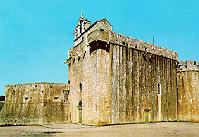History, culture...
Greek colonists from the island of Paros already founded a strong urban centre on the location of today's Stari Grad in 384-85 BC. Later battles between the Illyrians and Romans confirmed the importance and value of this territory, and each of these peoples also left distinctive traces of their presence, ranging from evidence of developed Neolithic activity to the monuments of Classical antiquity.


The arrival of the Croats in the early Middle Ages substantially altered theethnic substratum, but it nevertheless represented an organic continuation of existing cultural achievements. Having accepted Christianity, our ancestors effectively placed themselves into the history and art of the Western Europeansphere.


Despite all of the social and political changes, the island of Hvar has anuninterrupted continuity of communal self-assertion, artistic activity and asense of Croatian ethnicity. It could hardly have happened by mere chance that, with the exception of independent Dubrovnik, this island was certainly the greatest centre of early Croatian literature and at the same time a privileged domain of architecture, sculpture, painting and music. During the Gothic, Renaissance, Mennerism and Baroque periods, representative churces and places were erected, valuable pictures and sculptures were obtained, and urban and rural environments of extraordinary form and beauty were created.

Croatian cultural figures such as Hanibal Lucic, Petar Hektorovic, Vinko Pribojevic, Miksa Pelegrinovic, Martin Benetovic and Marin Gazarovic lived and worked on Hvar in the 16th and 17th centuries. There were many who tried their hand at various creative disiplines. The summer residence of Lucic and Hektorovic in Hvar and Stari Grad today bear witness to a lively interconnection of art and everyday life, necessity and freedom, and the elite and the common people.
More about the island
Back





